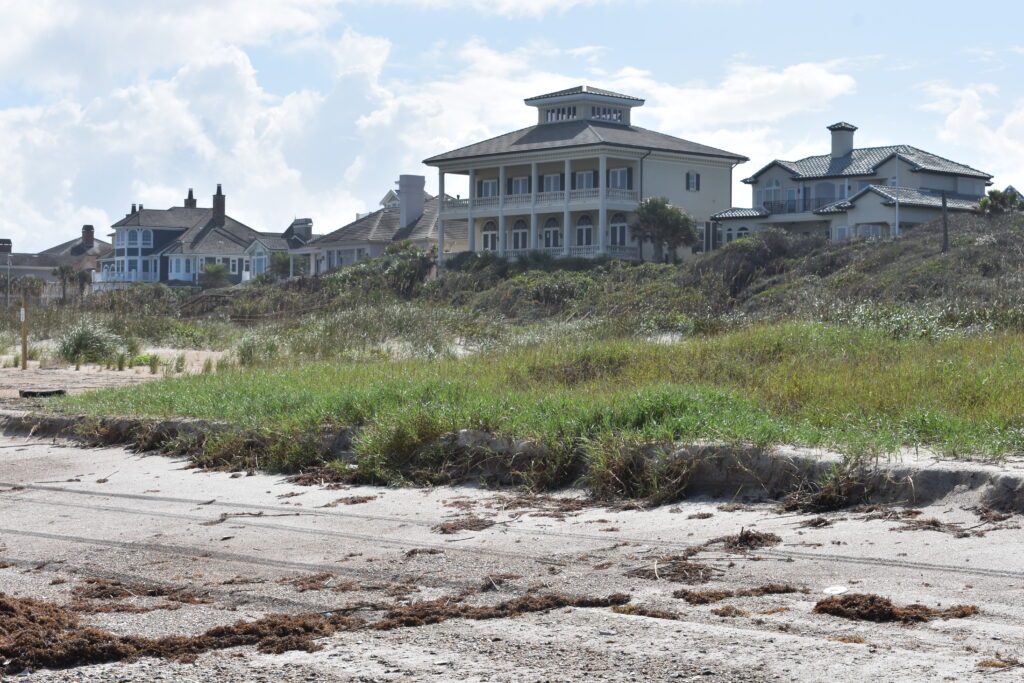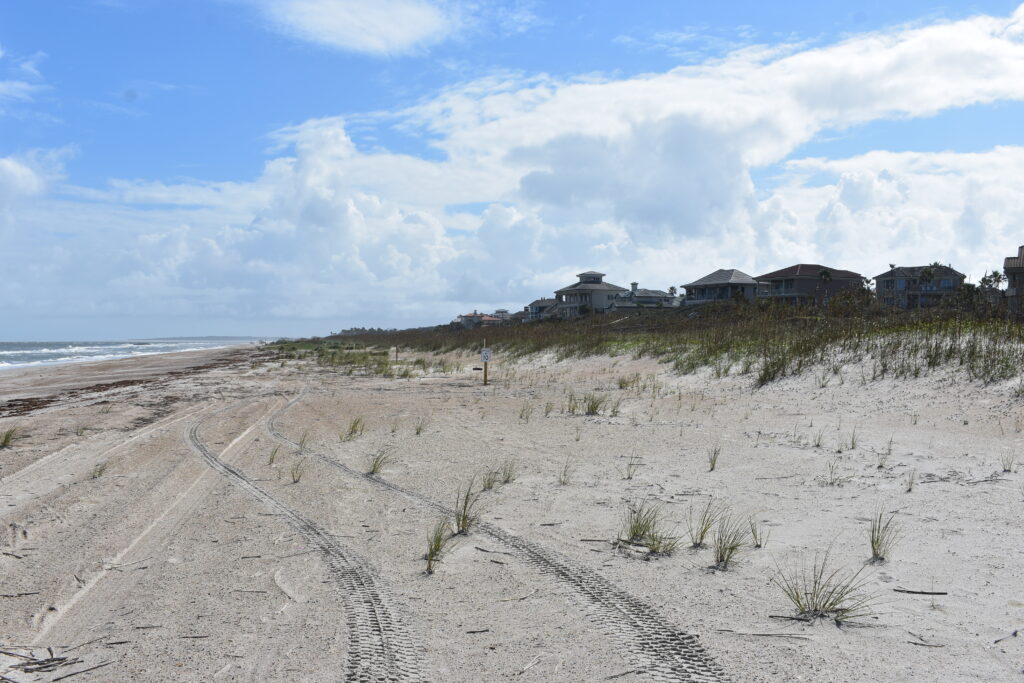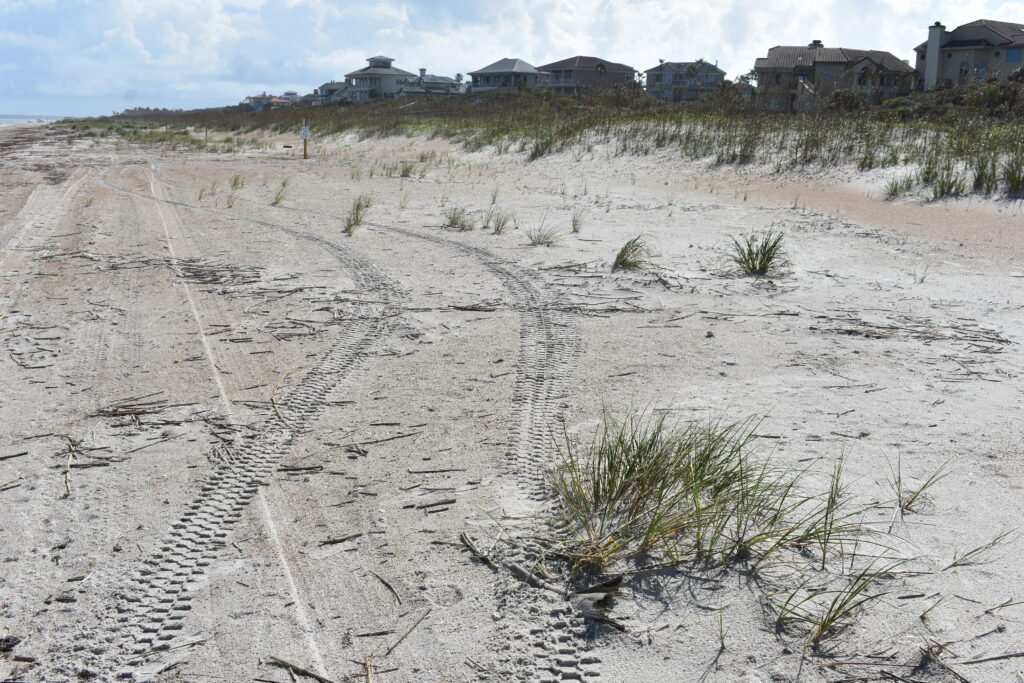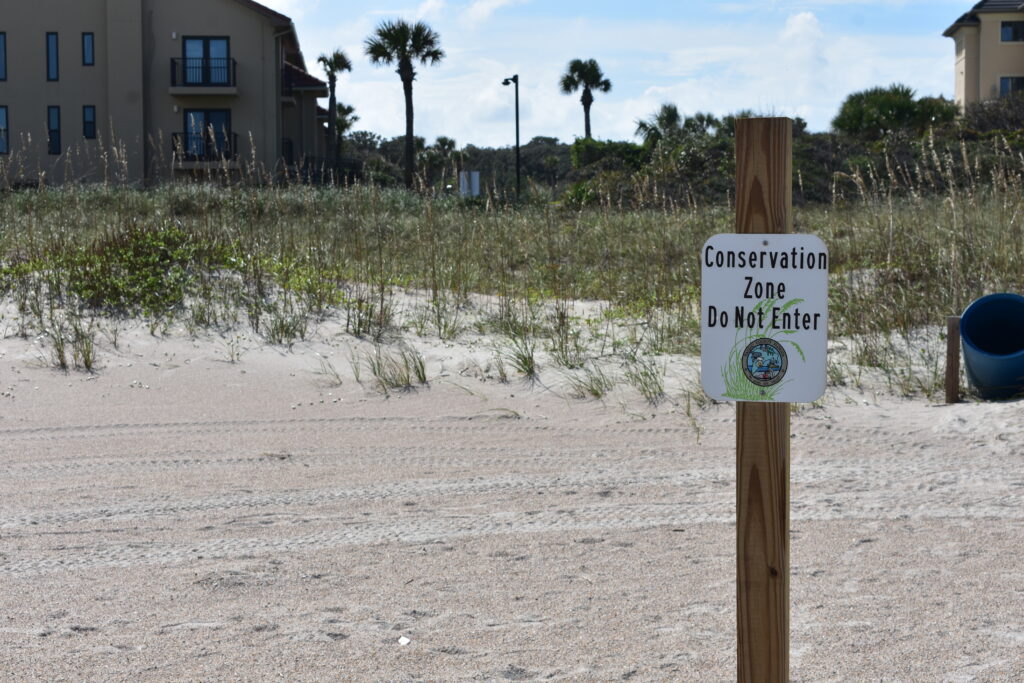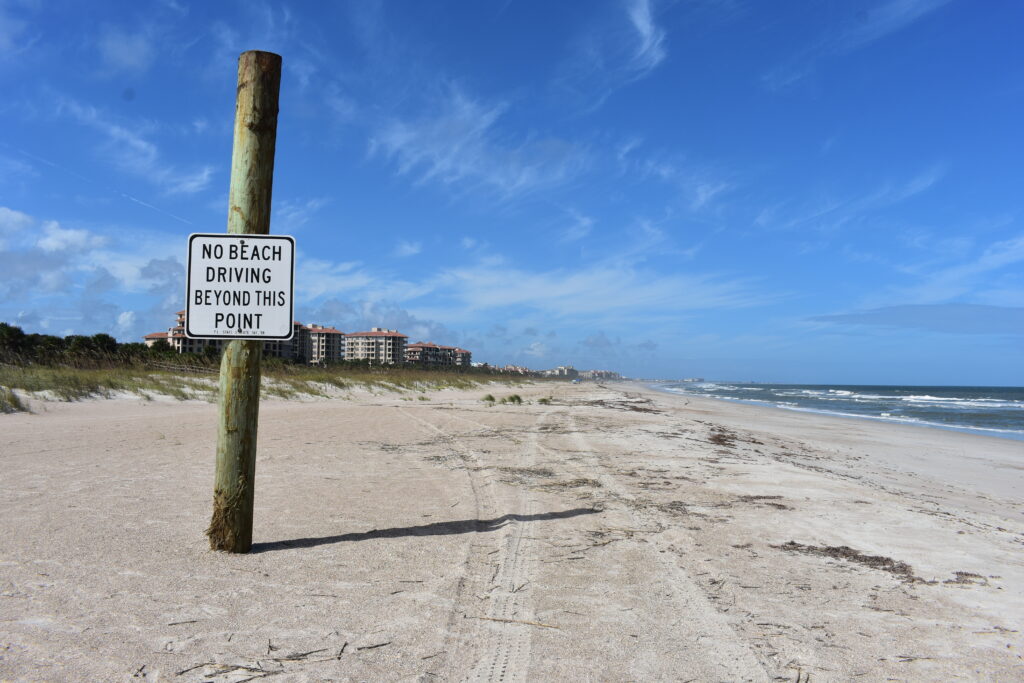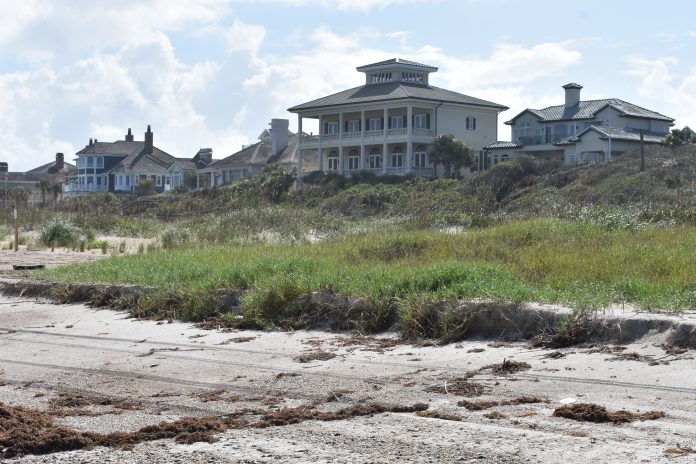By Kate Kimmel
Nassau NewsLine
When Nassau County moved its “no motor vehicle” signs three-quarters of a mile north on Amelia Island’s south end last month, it reignited a decades-old debate over beach driving — and left many South End homeowners furious.
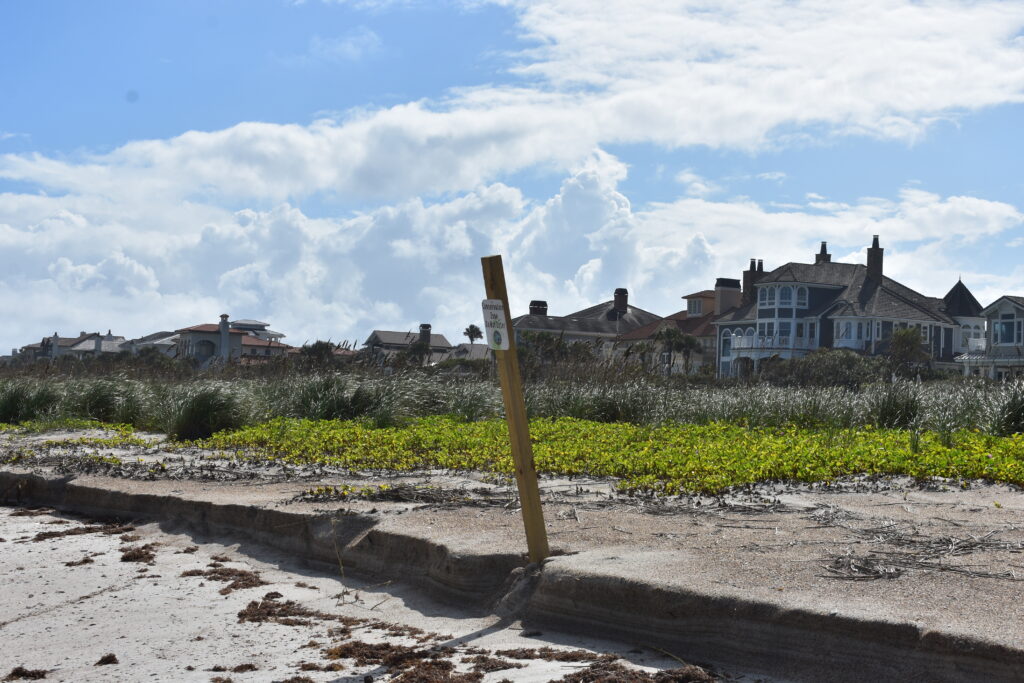
Residents say the change has opened fragile stretches of shoreline to trucks and SUVs, damaging dunes and native vegetation that protect both wildlife and property.
In 1990, Florida Senate Bill 1577 established areas in Nassau County where on-beach parking was prohibited, allowing vehicle access only from the Nassau Sound side of the island to the southern end of Amelia Island Plantation.
Fourteen years later, in November 2004, the Nassau County Commission voted to let the county administrator relocate “no vehicle access” signs “as necessary for safety reasons.” The meeting minutes offered no further explanation.
Following that vote, the signs were moved a mile south — to the northern border of Amelia Island State Park — where they remained for 21 years. County staff relocated them again on Sept. 2 after a clause in a mitigation agreement with Save Historic American Beach Inc. required the county to comply with the original boundaries defined by state law.
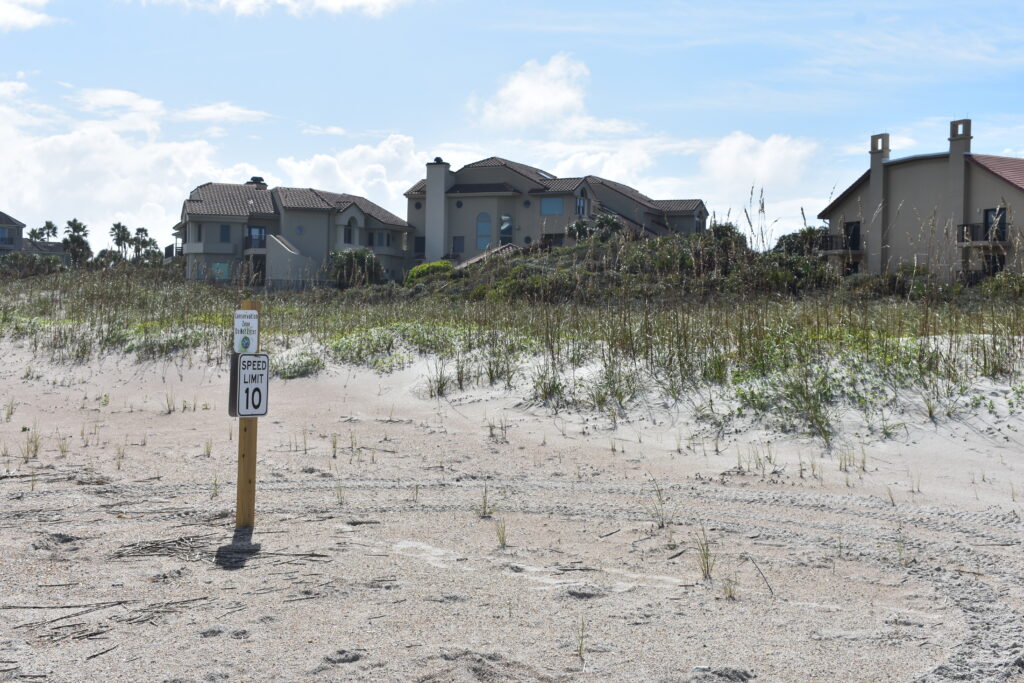
Homeowners in nearby beachfront communities — including The Amelia Retreat, The Seaside Retreat, The Residences and The Sanctuary — say they have since seen extensive dune erosion and crushed sea oats caused by vehicles.
David Bowman, a resident of The Residences, said he spent nearly a decade and thousands of dollars planting sea oats to stabilize dunes in front of his home. Within days of the signs being moved, he said, that work was destroyed.
“Beach drivers have destroyed about 30 feet of dunes,” Bowman said. “They moved the signs on a Monday, and by Wednesday the sea oats had been chewed up.”
Destruction or removal of sea oats is illegal and punishable by fines or jail time under Florida law because the plants help build and anchor dunes, according to the National Park Service. Tire tracks along the beach reveal that this law has been violated. Bowman says drivers are let off with a warning.
“It’s so criminal to go out and destroy Mother Nature’s beauty, and they aren’t enforcing a thing,” Bowman said. He said he has been emailing county officials almost daily with photos of damaged dunes.
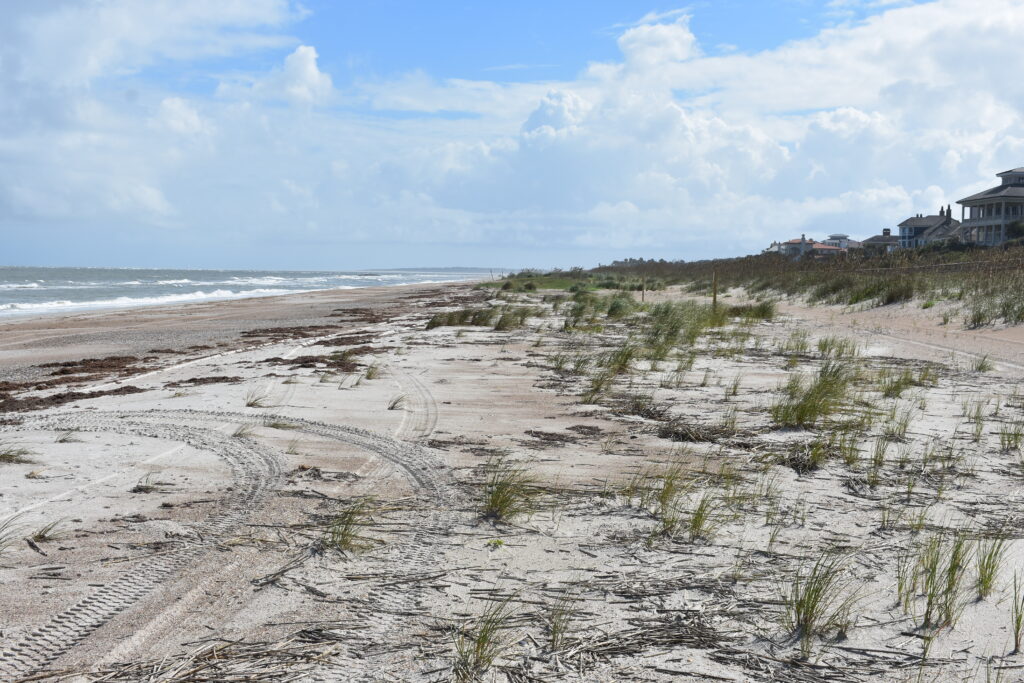
When Senate Bill 1577 was passed, the South End was largely undeveloped. Sanctuary resident Corky Hoffman said the law’s intent was to restrict parking in front of developed properties and that the county should now recognize that intent.
“For the last 21 years, people have been buying homes here with the understanding that there’s no beach driving,” Hoffman said. “I think a lot of people would prefer a safe beach to one that you can drive on.”
Mark Dawkins, founder of Save Historic American Beach, said his group never sought to expand beach driving through its lawsuit against the county.
“The purpose of that lawsuit was to eliminate beach driving, not expand it,” Dawkins said. “But we demanded that the county follow the law when it comes to beach driving, and they decided that enforcing the Senate bill was part of that.”
Bowman and Hoffman both said the county’s decision to move the signs seemed sudden and poorly planned. County officials have defended the decision, saying it was made to comply with state law.
Homeowners associations in the affected South End neighborhoods have begun planning potential legal action against the county, Hoffman said. Until then, Bowman said he will continue to email the county every chance he gets about the destruction he has witnessed in front of his home.
kkimmel@nassaunewsline.net

